South Korea Satellite-based Earth Observation Market Size
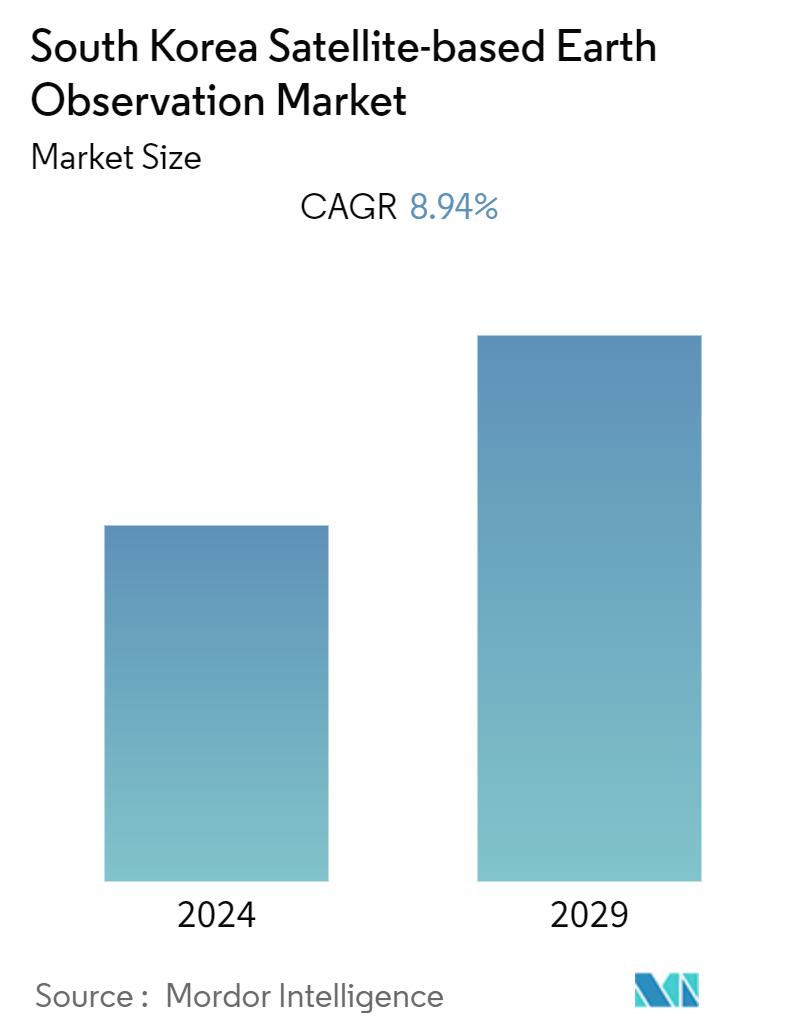
| Study Period | 2019 - 2029 |
| Base Year For Estimation | 2023 |
| Forecast Data Period | 2024 - 2029 |
| Historical Data Period | 2019 - 2022 |
| CAGR (2024 - 2029) | 8.94 % |
| Market Concentration | High |
Major Players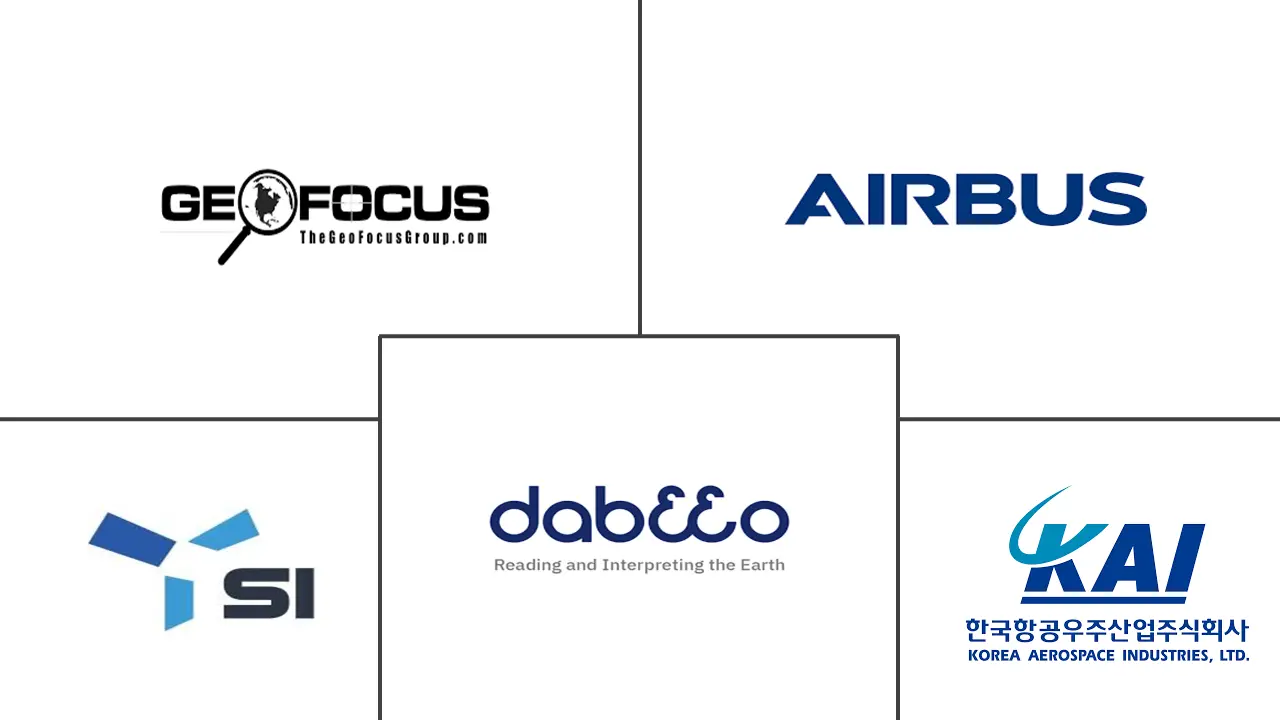
*Disclaimer: Major Players sorted in no particular order |
South Korea Satellite-based Earth Observation Market Analysis
The South Korea Satellite-based Earth Observation Market is expected to register a CAGR of 8.94% during the forecast period.
The growing adoption of earth observation imagery in several applications, such as urban monitoring, disaster management, and agriculture in the region, alongside government aid through space agencies, is analyzed to bolster the market growth rate during the forecast period.
- Satellite-based earth observation is a valuable tool for various applications and domains that can benefit South Korea. It can help meet the increasing demand for satellite-based Earth observation data, particularly in the fields of energy, climate monitoring, disaster management, and reconnaissance and surveillance for military purposes.
- Further, satellite-based earth observation can support the national space development program and the scientific and technological advancement of the country.
- It can enable wider economic benefits and sustainable development in collaboration with international financial institutions (IFIs) and other partners. It can enhance the security and defense capabilities of South Korea against potential threats from North Korea or other adversaries.
South Korea Satellite-based Earth Observation Market Trends
Government initiatives and investments is analyzed to drive the market during the forecast period
- The growing government initiatives and investments in the country are significantly driving the satellite-based earth observation market in the country. The government of Korea has spent a significant amount on space programs in recent years that positively contribute to the market growth rate. For instance, the South Korean Ministry of Science and ICT approved a total of USD264 million for three remote sensing satellites for use in resource management, environmental monitoring, and space science.
- The Ministry's National Space Committee plan for 2019 to 2025 is set for developing the three remote sensing satellites by private industry with support from the Seoul government. An electro-optical camera will be installed on one of the three remote sensing satellites, and it will be able to take images with a resolution of five meters across a 120-kilometer area. The Korea Forest Service and the South Korean Rural Development Administration will primarily use this satellite for environmental monitoring and resource management.
- Further, the growing government contracts for environmental applications is analyzed to significantly bolster the market growth during the forecast period. For instance, in April 2023, Exotrail announced a new contract with Satrec Initiative, a provider of Earth observation solutions based in Korea, to launch a space-based electric propulsion system for a government mission in Korea.
- Within a year, Exotrail will deliver a spaceware - micro XL propulsion system engineering model and a flight model for a proof-of-concept mission for an innovative earth observation service aiming to validate the use of Satrec Initiative's Earth observation platform in Low Earth Orbit (LEO). They have chosen Exotrail's spaceware product to meet the space mobility needs of an Earth observation satellite that will be used for a Korean government R&D mission.
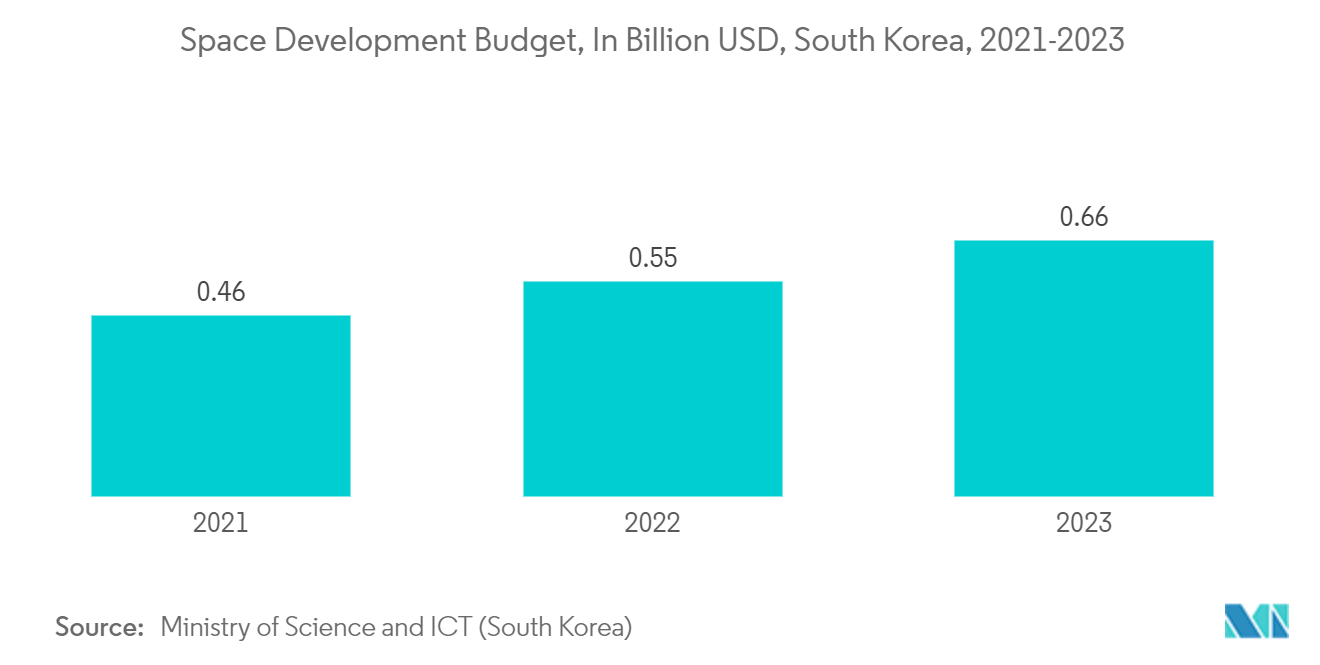
Urban Development and Cultural Heritage is analyzed to grow significantly during the forecast period
- The country has several urban projects in progress, as indicated in the graph. Seoul came in seventh place on the Mori Memorial Foundation's Institute for Urban Strategies' Global Power City Index in 2022. However, the city intends to advance further to secure one of the top five positions.
- The city is getting closer to achieving this objective with its recently unveiled urban design plan. By changing building codes, building new facilities and precincts, and focusing on architectural design, the government's Urban Architectural Design Innovation Plan wants to turn Seoul into a vibrant cultural hub.
- Seoul has developed its own "urban regeneration" policy to promote active and mature citizenship from the premise that a city is not a place for "development" but rather for "harmonious coexistence" in the midst of rapid sociocultural change. It will implement new reforms to enhance the city and citizens' quality of life.
- Seoul's new vision for the city is laid out in its urban design plan, which will be realized by constructing new amenities for locals and visitors alike. As earth observation aids in urban monitoring systems, land use change, expansion modeling, densification, etc., the growing urban projects in the country are analyzed to boost the market growth rate.
- Further, the country has launched smart city plans. The National Pilot Smart City was built so that sites without plans for development could see how technologies from the Fourth Industrial Revolution could be integrated. By developing an innovative industrial ecosystem that is capable of putting creative business models into action, it is also working toward the objective of demonstrating the leading model for the future smart city. Sejong and Busan are the national pilot smart cities.
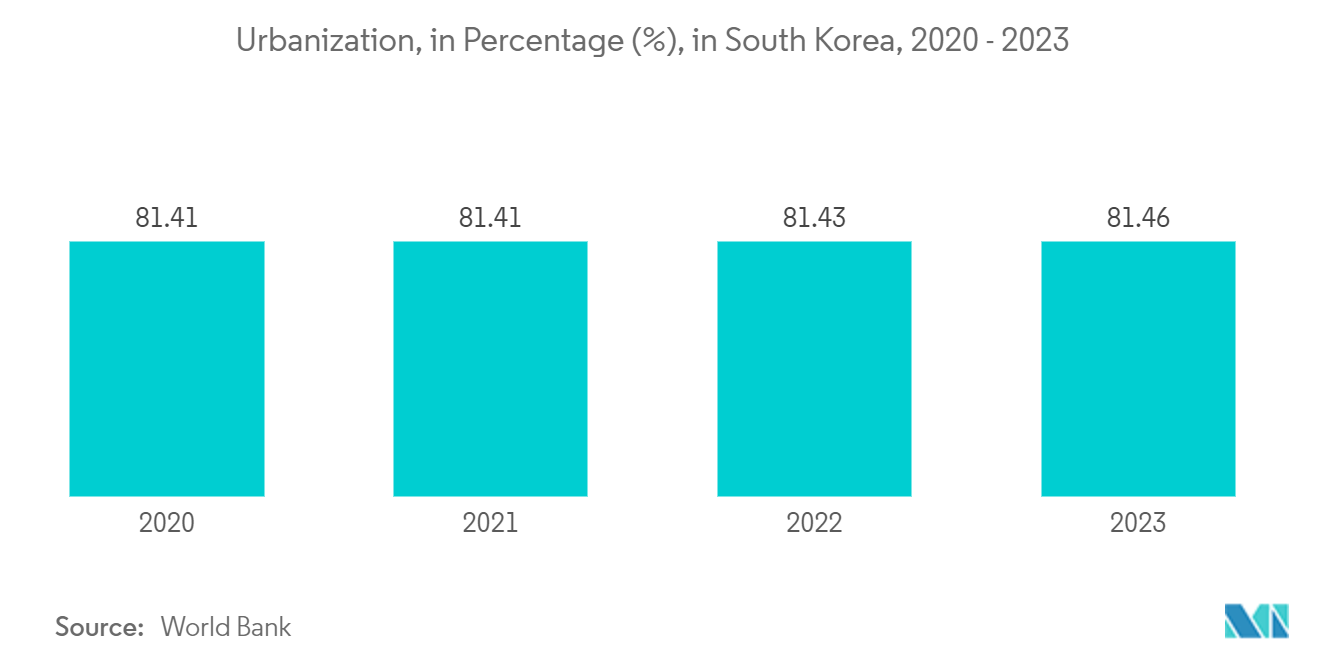
South Korea Satellite-based Earth Observation Industry Overview
South Korea Satellite-based earth observation is in the growth stage, with various end-users adopting advanced technologies to evaluate better the strategies for efficient outcomes in urban planning, disaster management, and so on, contributing to the market growth rate.
In May 2023, South Korea launched a commercial-grade satellite for its expanding space development program. A payload of eight satellites, including a main commercial-grade satellite whose purpose is to verify radar imaging technology and observe cosmic radiation in a near-Earth orbit, was launched from a launch facility on a southern island by the domestically built Nuri rocket.
South Korea Satellite-based Earth Observation Market Leaders
-
Satrec Initiative Co., Ltd.
-
Dabeeo Inc.
-
Geofocus Co., Ltd.
-
Airbus
-
Korea aerospace industries ltd
*Disclaimer: Major Players sorted in no particular order
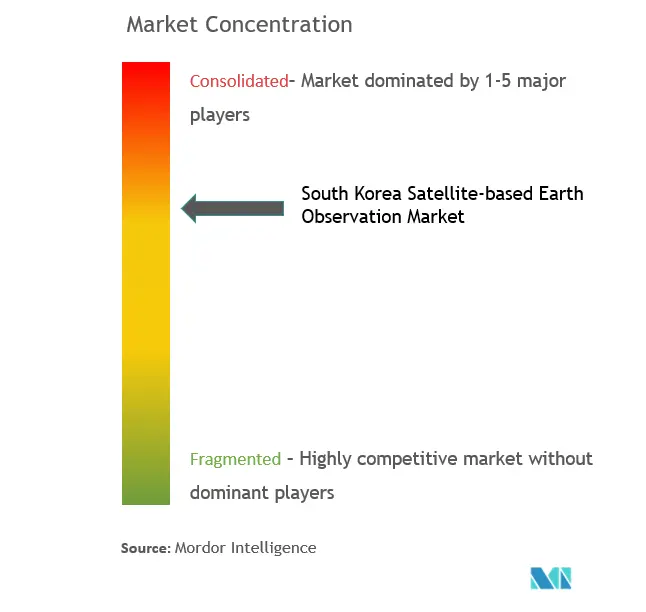
South Korea Satellite-based Earth Observation Market News
- April 2024 - Thales Alenia Space's contribution to this program, developed in cooperation with Korean Aerospace Industries (KAI) and Hanwha Systems Corporation (HSC), for the Korean Agency for Defence and Development (ADD) as the prime developer, goes beyond the engineering support provided during the critical phases of the End-to-End System and Satellite System projects and contribution extends to the supply of our high-performance Synthetic Aperture RADAR (SAR) that utilizes an innovative antenna consisting of a Large deployable reflector with 24 deployable petals and an active phased array feed array in dual polarization.
- April 2024 - South Korea has launched a nanosatellite into orbit as part of its project to create a constellation of satellites by 2027.The South Korean Yonhap Agency reported on Wednesday that the satellite was launched aboard Rocket Lab's Electron rocket from a spaceport in Mahia city, New Zealand. The agency quoted the South Korean Ministry of Science, Information Technology and Communications, saying that the satellite, called "Neonsat-1", is scheduled to be deployed in space at an altitude of 520 kilometers.
South Korea Satellite-based Earth Observation Market Report - Table of Contents
1. INTRODUCTION
- 1.1 Study Assumptions and Market Definition
- 1.2 Scope of the Study
2. RESEARCH METHODOLOGY
3. EXECUTIVE SUMMARY
4. MARKET INSIGHTS
- 4.1 Market Overview
-
4.2 Industry Attractiveness - Porter's Five Forces Analysis
- 4.2.1 Bargaining Power of Buyers
- 4.2.2 Bargaining Power of Suppliers
- 4.2.3 Threat of New Entrants
- 4.2.4 Threat of Substitutes
- 4.2.5 Intensity of Competitive Rivalry
- 4.3 Assessment of Macro-Economic factors in the Market
5. MARKET DYNAMICS
-
5.1 Market Drivers
- 5.1.1 Government Initiatives and Investments
- 5.1.2 Technological Advancements
-
5.2 Market Restraints
- 5.2.1 Budget Constraints and Technological Limitations
6. MARKET SEGMENTATION
-
6.1 By Type
- 6.1.1 Earth Observation Data
- 6.1.2 Value Added Services
-
6.2 By Satellite Orbit
- 6.2.1 Low Earth Orbit
- 6.2.2 Medium Earth Orbit
- 6.2.3 Geostationary Orbit
-
6.3 By End-Use
- 6.3.1 Urban Development and Cultural Heritage
- 6.3.2 Agriculture
- 6.3.3 Climate Services
- 6.3.4 Energy and Raw Materials
- 6.3.5 Infrastructure
- 6.3.6 Other End-Use
7. COMPETITIVE LANDSCAPE
-
7.1 Company Profiles
- 7.1.1 Satrec Initiative Co., Ltd.
- 7.1.2 Dabeeo Inc.
- 7.1.3 Geofocus Co., Ltd.
- 7.1.4 Airbus
- 7.1.5 Korea aerospace industries ltd
- *List Not Exhaustive
8. INVESTMENT ANALYSIS
9. MARKET OPPORTUNITIES AND FUTURE TRENDS
** Subject To AvailablitySouth Korea Satellite-based Earth Observation Industry Segmentation
The study tracks the key market parameters, underlying growth influencers, and major vendors operating in the industry, which supports the market estimations and growth rates over the forecast period.
The South Korea satellite-based Earth observation market is segmented by type (earth observation data and value-added services), satellite orbit (low earth orbit, medium earth orbit, and geostationary orbit), and end-use (urban development and cultural heritage, agriculture, climate services, energy and raw materials, infrastructure, and other end-use
The market sizes and forecasts are provided in terms of value (USD) for all the above segments.
| By Type | Earth Observation Data |
| Value Added Services | |
| By Satellite Orbit | Low Earth Orbit |
| Medium Earth Orbit | |
| Geostationary Orbit | |
| By End-Use | Urban Development and Cultural Heritage |
| Agriculture | |
| Climate Services | |
| Energy and Raw Materials | |
| Infrastructure | |
| Other End-Use |
South Korea Satellite-based Earth Observation Market Research Faqs
What is the current South Korea Satellite-based Earth Observation Market size?
The South Korea Satellite-based Earth Observation Market is projected to register a CAGR of 8.94% during the forecast period (2024-2029)
Who are the key players in South Korea Satellite-based Earth Observation Market?
Satrec Initiative Co., Ltd., Dabeeo Inc., Geofocus Co., Ltd., Airbus and Korea aerospace industries ltd are the major companies operating in the South Korea Satellite-based Earth Observation Market.
What years does this South Korea Satellite-based Earth Observation Market cover?
The report covers the South Korea Satellite-based Earth Observation Market historical market size for years: 2019, 2020, 2021, 2022 and 2023. The report also forecasts the South Korea Satellite-based Earth Observation Market size for years: 2024, 2025, 2026, 2027, 2028 and 2029.
South Korea Satellite-based Earth Observation Industry Report
Statistics for the 2024 South Korea Satellite-based Earth Observation market share, size and revenue growth rate, created by Mordor Intelligence™ Industry Reports. South Korea Satellite-based Earth Observation analysis includes a market forecast outlook to for 2024 to 2029 and historical overview. Get a sample of this industry analysis as a free report PDF download.



